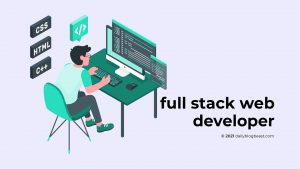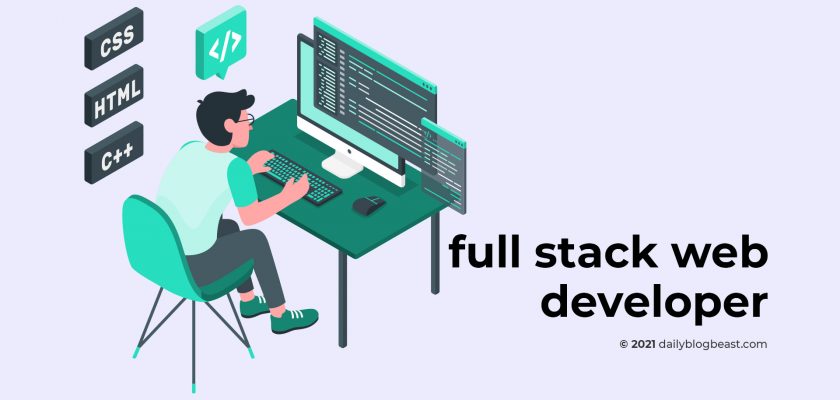A Full Stack Developer is a relatively new position that combines the abilities and responsibilities of both a web designer and a web developer. The site’s design was handled by a web designer, while the programming was handled by a web developer.
The two positions have gotten more specialized and technical as the web has become more sophisticated, and clients have sought more complicated solutions for their online presence. Further, the two positions and talents have been intertwined in some circumstances, culminating in the job of Full Stack Developer.
Front-end Development.
Back-end Development.
Full Stack Development.

A web developer or engineer that works on both the front and back ends of a website or application is known as a full stack developer. They provide an end-to-end service in this respect, and can be involved in projects involving databases and the creation of user-facing websites. Their responsibilities may include collaborating with clients throughout the project planning phase.
More developers are becoming “full stack” as the border between front end and back end continues to blur. Many organisations (particularly agencies that operate on a variety of sites) are searching for developers that can work on all aspects of a site.
so that they may utilize the greatest tools for the job, whether it’s technically “front end” or “back end”
For big or specialized projects, the Full Stack Developer will frequently need the help of others to create specialized code; yet, the Full Stack Developer must be well-versed in and talented in most elements of web and application development.
duties and obligations
A Full Stack Developer’s main responsibilities include creating website user interactions, creating servers and databases for website functioning, and coding for mobile platforms.
Creating the architecture of a front-end website.
Creating user interfaces for web pages.
Creating back-end website applications
For functionality, servers and databases are created.
Assuring mobile phone cross-platform optimization.
Assuring application responsiveness.
Working on site design elements with graphic designers.
Seeing a project through from inception to completion.
Creating and designing APIs.
Providing for both technical and consumer requirements.
Keeping up with changes in web apps and programming languages.
Full Stack Developers usually have a computer science degree and/or have taken programming classes. Full Stack Developers frequently have degrees in programming or closely related fields.
Whole Stack Developers have extensive expertise and a portfolio of work on websites and applications they have created, whether for the backend, frontend, or full stack.
Full Stack Developers often start their careers as either frontend or backend developers, and they have mastered abilities in both areas and are aiming to expand their knowledge to cover the interface between the two.
At the junior level, full-stack developers often have 2-5 years of on-the-job experience, a bachelor’s degree in computer science or information systems, or a combination of experience and education. Gaining proficiency in all levels of computer software development and a preliminary grasp of how all features on both the user and server sides operate from top to bottom are all part of the practical experience. Continuous experience will aid in the development of your capacity to foresee and detect challenges, hence increasing your value as a team member.
It is recommended that you continue your professional growth as a Full-Stack Engineer by attending seminars or taking extra training courses.
These courses should primarily aim to assist you improve your web development and software abilities, as well as your grasp of business procedures.
The abilities needed for a Full Stack Developer will differ depending on the duties and kind of organization or activity.
A computer science degree is required.
Exceptional organizational and project management abilities.
Fundamental front-end languages such as HTML, CSS, and JavaScript are required.
Angular JS, React, and Amber are all JavaScript frameworks that you should be familiar with.
Server-side languages such as Python, Ruby, Java, PHP, and .NET are required.
Excellent verbal communication abilities. Good problem-solving capabilities. Familiarity with database technologies such as MySQL, Oracle, and MongoDB. The devil is in the details.
While it is possible to work as a Full Stack Developer without formal qualifications, many businesses prefer candidates who have computer science degrees.
Taking part in an internship programmed while still in school. You will gain valuable experience as well as coaching and mentoring from experienced Full Stack Developers.
To gain a specialization in one or more programming languages, take online or in-person courses.

